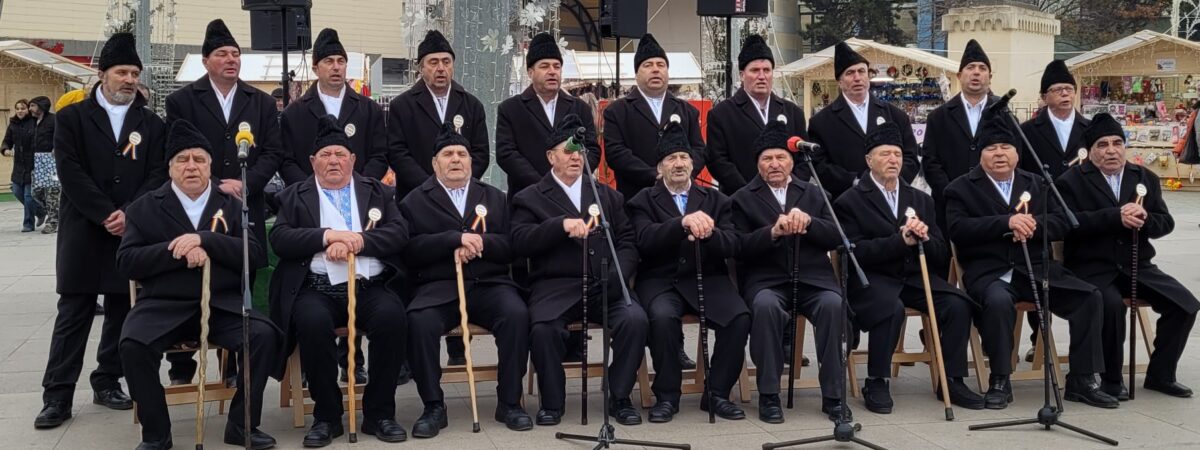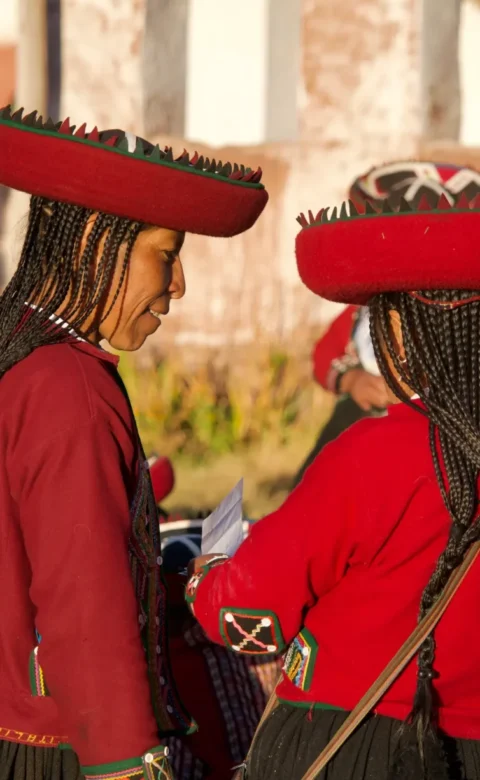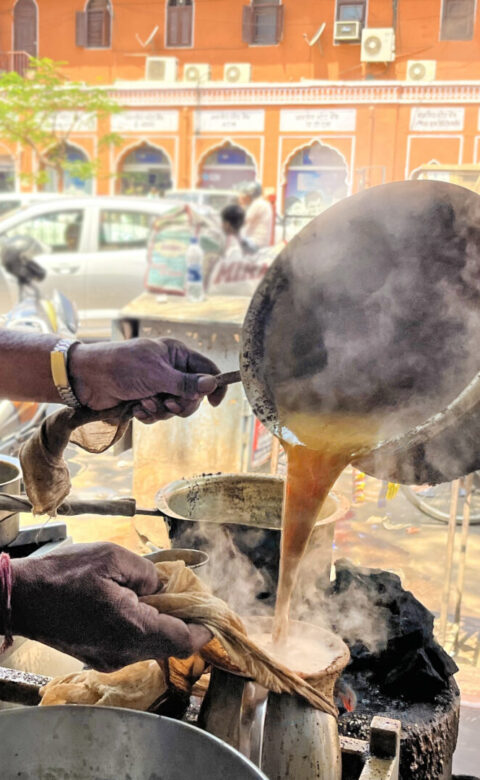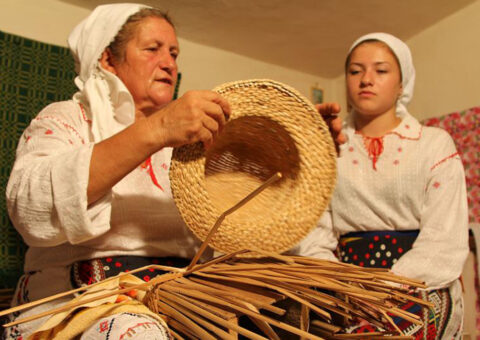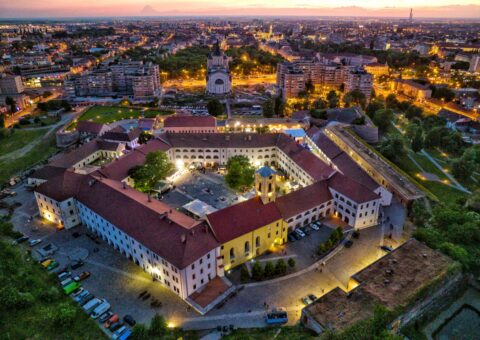A group of men — the most senior, aged 84 — still sings two-century-old Christmas carols in a village in Romania. The songs have complicated texts and outdated words, reaching back to an earlier style of music. The singers participate in festivals and sing from house to house on Christmas Eve, and their preferred reward is their hosts’ joy at watching them.
At festivals, the choreography is always the same. First, a group of young people carrying nine folding chairs enters the stage. Then, the older men sit on the chairs, leaning on canes. Together, they start to sing Christmas carols that are two centuries old. The 20 men, aged 43 to 84, wear black pants and coats, a traditional white blouse called ‘ie’ (pronounced ee-eh), white scarves, wide belts, and shearling hats. Some of them, with tensed stiff shoulders, are rubbing their hands anxiously, while others, more relaxed, joke and laugh.
Whether they are in their native village of Jijila, Tulcea county, nearby villages like Luncavița, or larger cities, Gabriel Caramarin, the coordinator, shouts into the microphone: “Green chicory leaf, we came from a land between the Danube and the sea to bring you a greeting.”
Then, 20 rich, drawling male voices begin singing in unison, with no rush and only short breaks. Their songs usually have a main character: a hunter, a young girl or boy, someone elderly, a shepherd, or a religious individual. The protagonist often goes on an adventure, and the melody ends with a greeting for the audience.
“Our carols are a bit monotonous,” said Caramarin. “They are nice, but you must really listen to the words to understand the story.”
The carolling ensemble, Glasul Străbunilor, stepped onto a stage for the first time in 2013. It was formed organically, starting with a handful of individuals who never ceased singing the traditional tunes. After the collapse of communism in 1989 and the opening of Romania’s borders, the country welcomed modern, commercial, and rhythmic festive songs. Young people adopted the new tunes with simpler lyrics. The old songs had long and complicated texts (the longest has 20 stanzas), with some words dating back to 1840 and no longer in use.
Before 1989, groups of carolers — always composed of men — started rehearsing on December 6, Saint Nicholas Day. They would meet in some of the members’ houses and keep repeating the carols until Christmas Eve, so they wouldn’t embarrass themselves in front of the hosts by not knowing the complicated lyrics.
“We had quite a large group, and we were taking turns on stanzas,” said Tudor Brezeanu, who was born and raised in Jijila and researched the carols of that area. “We had to learn the lines well because the hosts were attentive, and they had expectations of us. So we didn’t want to be ashamed.”
On Christmas Eve, they would visit the important families in the village — the mayor, the priest, some teachers — and their own families, but especially the families of the girls they were in love with. The songs were about universal aspects in people’s lives, like marriage, stories that captured the history and spirit of the community, but also about bravery, wisdom, and totemic animals like the deer and doe. Because the nation lacked money back then, the reward for their effort consisted of lean meat, sausages, and wine. They didn’t share the goodies but would meet on Christmas Day, have a barbecue, and eat it together.
In addition to the festivals, Glasul Străbunilor still maintains the tradition of singing from house to house on Christmas Eve. Because very few groups do this, it’s an honour to be visited by them and to hear the old songs. For some villagers, this is the most-awaited moment of the day.
They start at noon and finish around 9 in the evening, which is enough time to visit about 40 houses and for the oldest to get exhausted. Especially since some of them attend the service in the church the following day, starting at 5 am, and sing to the end of the worship service. The hosts always await them with snacks, cakes, cookies, wine, or țuică, a type of alcohol made of fruits. Most of the time, neighbours show up, especially to hear them. It’s a rare occasion.
“When the hosts welcome me into their home,” said Iamandi Dumitru, the oldest man in the group, “and I see that they enjoy the carols, I don’t need any other payment.”
They have 14 old carols in their repertory. For some of them, they had to negotiate the lyrics as they learned them differently at home, from older siblings or their parents. But some carols are simply considered lost because they don’t remember the lyrics or the melody.
“Some carols had similar melodic lines to others, so it was easy to mistake them,” said Brezeanu. “Besides that, the bands chose the most beautiful ones and ignored the more dull ones, so people forgot about them.”
Not everyone in the village understands why they put in so much effort. “Don’t you have anything better to do?” some ask.
However, preserving traditions is a vital way for communities to pass down their cultural heritage from one generation to the next. Each note of a carol and every detail of the traditional costumes holds the values that have shaped the community over time.

